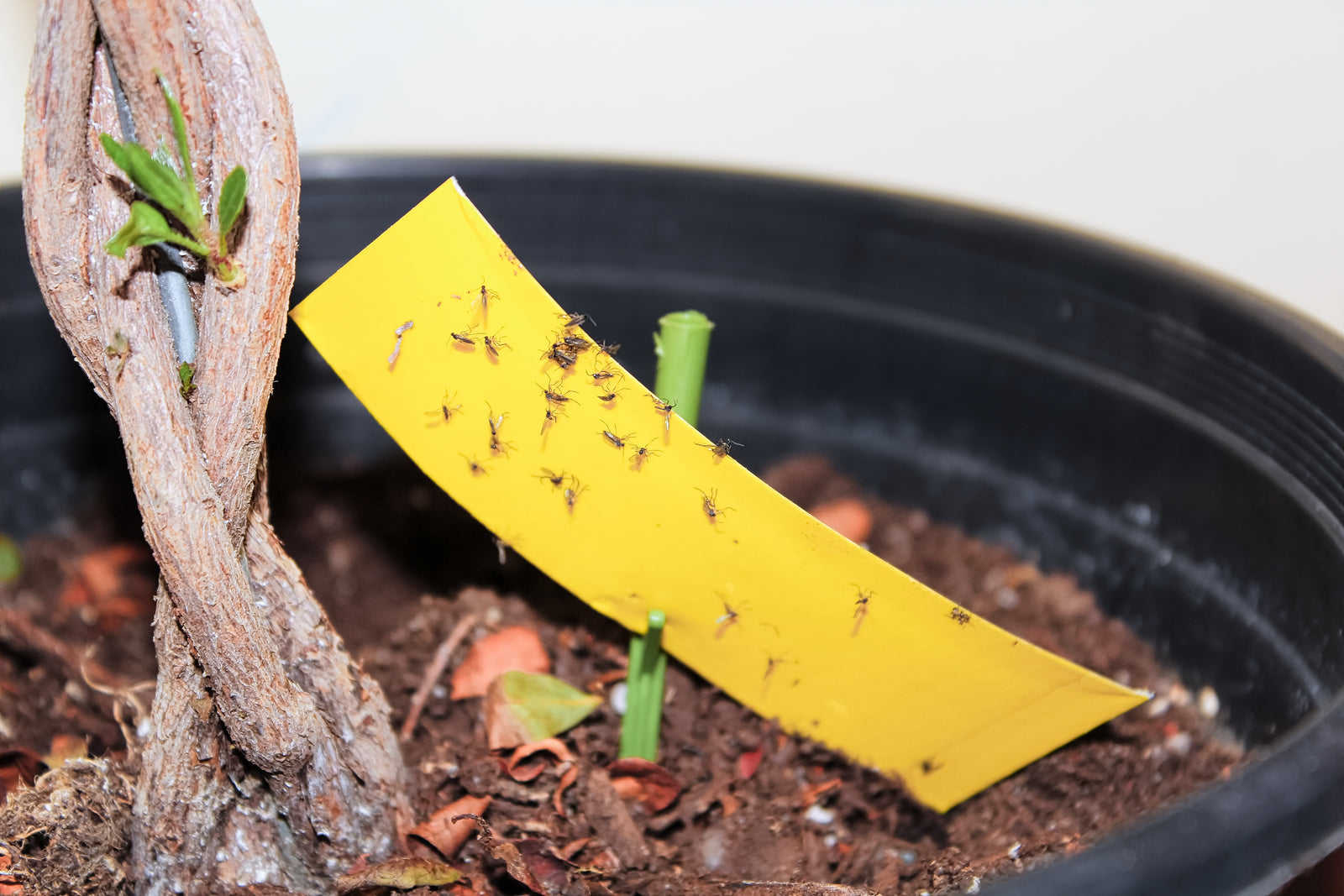Your Cart is Empty
Add description, images, menus and links to your mega menu
A column with no settings can be used as a spacer
Link to your collections, sales and even external links
Add up to five columns
Add description, images, menus and links to your mega menu
A column with no settings can be used as a spacer
Link to your collections, sales and even external links
Add up to five columns

The Annual Fungus Gnat Battle
September 19, 2023 2 min read
As the days grow shorter and temperatures drop, many plant enthusiasts face the annual challenge of bringing their beloved outdoor greenery indoors for the winter. While this transition can be rewarding, it often comes with an unwanted guest – fungus gnats. These tiny, pesky insects can quickly infest your indoor plants, but fear not! With a few simple strategies, you can keep fungus gnats in check and maintain a healthy, thriving indoor garden.
Understanding Fungus Gnats
Fungus gnats (Sciaridae family) are small, flying insects that lay their eggs in the moist soil of potted plants. These eggs hatch into larvae, which feed on organic matter in the soil, including plant roots. As adults, they are nuisance fliers and can disrupt the tranquility of your indoor space. The good news is that you can take several steps to prevent and control fungus gnat infestations.

1. Choose the Right Potting Mix
The first line of defense against fungus gnats starts with your potting mix. Opt for a well-draining mix that doesn't retain excess moisture. A mix containing perlite or sand can help improve drainage and discourage the development of fungus gnat larvae.

2. Water Wisely
Overwatering is a common mistake that can attract fungus gnats. Ensure you water your indoor plants only when the top inch or two of soil feels dry to the touch. Using a saucer or tray under your pots can also help prevent water from accumulating at the bottom, where larvae thrive.

3. Use Sticky Traps
Sticky traps are an excellent tool for monitoring and capturing adult fungus gnats. These yellow or blue traps attract and capture the flying pests, reducing their population. Place the traps near your plants, and replace them as they become covered with insects.
4. Allow the Soil to Dry Out
Fungus gnat larvae require a consistently moist environment to thrive. To disrupt their life cycle, allow the soil in your pots to dry out between waterings. This will make the environment less hospitable for the larvae.

5. Consider Neem Oil or Insecticidal Soap
If a fungus gnat infestation becomes severe, you may need to use organic insecticides like neem oil or insecticidal soap. Follow the product instructions carefully and apply these treatments sparingly to avoid harming your plants.
Remember, preventing and managing fungus gnats is an ongoing process, especially during the winter months when indoor humidity levels can promote their growth. By following these strategies and staying vigilant, you can enjoy a beautiful, pest-free indoor garden all year round. With a little care and attention, you'll keep your plants healthy and your home free from those pesky fungus gnats. Happy gardening!
Subscribe
Sign up to get the latest on sales, new releases and more …




